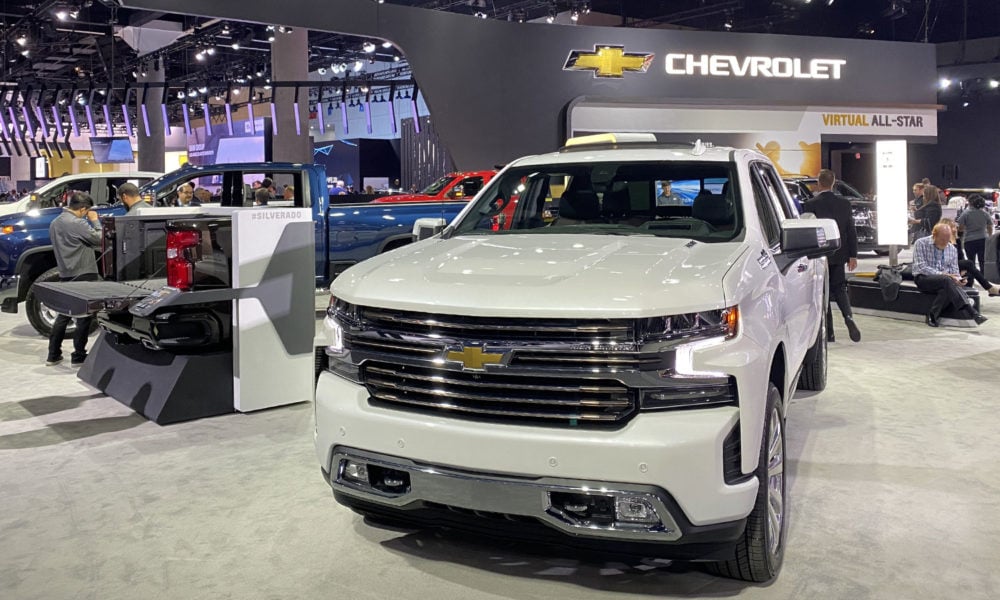General Motors recently announced that the company “aspires to eliminate tailpipe emissions from new light-duty vehicles by 2035.” This is a laudable goal, but it will require much more than aspiration to make real progress on cleaning up our country’s cars and trucks.
Many in the press were quick to credit GM for this announcement, but it’s important to remember that aspirations are only the first (and easiest) step in any plan. As an analogy, I may aspire to run a marathon this fall. But if all I do is online browsing of running shoes and make vague promises, I’m not going to cross a finish line. Instead, I’d need to take concrete action: register for a race, buy the shoes, and put in serious work with months of training runs.
So far, GM has announced their vision and shown hints at what models they may make, but we haven’t seen real examples yet of what it will take to replace their high-volume gasoline trucks and SUVs with zero emission vehicles. And based on what we have seen from GM over the last 5 years, some skepticism in their promises is warranted. GM was front and center during the last administration in pushing for lower fines for falling short of fuel economy standards, proposing weak emissions standards and zero emission vehicle standards, and threatening California’s authority to protect the state’s residents from pollution.
Early start, yet slow progress on electrification for GM
GM led other traditional automakers with one of the first mass market plug-in cars with the introduction of the Chevrolet Volt plug-in hybrid in late 2010. Now a decade later, how many Chevy, GMC, Cadillac, and Buick EVs are available the US? Still only one, after the Volt and other low-volume EVs were discontinued.
Tomorrow’s plans might be electric, but today’s strategy is rooted in burning gasoline
GM’s future may very well be in electric vehicles, and I certainly hope that they succeed in moving away from gasoline. But what are they doing now? They’re trying to sell as many gasoline trucks and SUVs as possible. For example, according to ad tracking firm iSpot.tv, GM spent over $6 million this month on a single Chevy Silverado Trail Boss television advertisement. Altogether, GM sold fewer than 21,000 electric cars in the US in 2020 while selling over 2.5 million gasoline and diesel cars, trucks, and SUVs across the country. It’s great that GM wants to move to an electric future, but in the time between now and the proposed introduction of these new models, millions of gasoline-burning vehicles will be sold, ensuring more air pollution and climate-changing emissions over the vehicles’ 12-to-15-year average lifespan.
GM isn’t even close to the worst
Though GM has a good deal of work to go from where they are now to their vision of zero emissions future, they are far from the worst. For example, domestic competitor Stellantis (formerly Fiat Chrysler and the maker of Jeep, Dodge, and Ram models) has made almost no progress towards electrification and has prior leadership that was dismissive of plug-in vehicles. Other companies are also working against EVs, such as Toyota’s CEO making false claims about the environmental performance of EVs and the company supporting the prior administration’s efforts to rollback fuel economy and greenhouse gas regulations.
We need car companies like GM to show more than vision
So, what can GM do, besides the obvious step of selling electric cars at a much higher rate?
- First, they can stop actively opposing clean car standards. While GM recently announced they were withdrawing from a lawsuit opposing California’s vehicle standards, they are still supporting legal action to defend the weakened federal standards of the last administration. GM is also fighting efforts to bring zero emission vehicle standards to more states, via an industry trade group.
- Second, GM could actively support current and new clean car regulations. Both in California and at the national level, they have an opportunity to show leadership that matches their aspirations by supporting emissions and vehicle standards consistent with 100 percent zero emission vehicles by 2035.
- In the short term, GM could also join Ford, VW, Honda, and BMW in voluntarily reaching an agreement with California to meet tougher emissions standards.
In short, GM could turn aspirations into action by supporting regulations that ensure they meet their goal of 100 percent zero emission cars and trucks by 2035 and support measures to clean up gasoline cars over the next decade.
Make no mistake, I want GM to succeed in their plans to get to zero emissions. But in the company’s second decade of making modern plug-in cars, we need them to move much more quickly away from lofty promises towards actually filling dealerships and driveways with electric cars. If we want to reduce the worst impacts of climate change, we’ll need to make that switch from gasoline to electricity as quickly as possible. Companies like GM can help lead the way in making that happen, but it will take more than announcements and aspirations.

